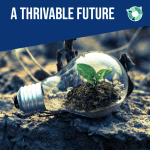Modern evolutionary engineering techniques—notably clustered regularly interspaced short palindromic repeats (CRISPR) gene editing technology, gene therapy, and synthetic biology—are transforming healthcare by tackling diseases at their genetic roots. Scientists can now “edit” the human genome to correct mutations, offering hope for curing thousands of genetic diseases (UNCTAD, 2019). These technologies have started to reach patients already: in 2019, Victoria Gray became the first U.S. patient treated with CRISPR for sickle cell anemia, while gene-editing treatments for blood disorders are on the verge of regulatory approval (Stanford News, 2024). Additionally, gene therapies as one-time cures are emerging – Luxturna, for instance, was the first FDA-approved gene therapy that restored vision in patients with inherited blindness (FDA, 2017).
Beyond rare genetic disorders, synthetic biology and genome editing offer new tools for disease prevention and longevity. Researchers are engineering immune cells (like CAR-T cells) to hunt down cancers, modifying viruses to fight infections (Ipoutcha et al., 2024), and designing gene drives in mosquitoes to halt malaria transmission (Naidoo & Oliver, 2025).

Source: Naidoo & Oliver, 2025
We’re also seeing emerging trends like mRNA vaccine technology (a product of synthetic biology) enabling rapid pandemic responses, and exploratory gene therapies aiming to slow aging by repairing DNA or regenerating cells (Beyret et al., 2019).
These advances suggest a future where medicine is increasingly predictive and personalised. If developed responsibly, and made easily accessible, evolutionary engineering could help eradicate certain diseases globally.
But its impact goes even further—connecting directly with several United Nations Sustainable Development Goals.
Evolutionary engineering plays a key role in advancing several of the UN Sustainable Development (SDG) Goals (UN, n.d.). With its ability to treat and prevent diseases at the genetic level, it contributes especially strongly to SDG3 (Good Health and Well-being) by improving quality of life, extending healthy lifespans, and reducing health burdens globally. On the innovation front, it supports SDG9 (Industry, Innovation and Infrastructure) by driving forward high-tech research and biomanufacturing capabilities that can be more efficient, responsive, and even regenerative—particularly when designed with sustainability in mind.
As for SDG11 (Sustainable Cities and Communities), the ripple effects of biotech are increasingly visible in urban health systems—through precision public health, new tools for disease prevention, and even environmental bioengineering like using synthetic microbes to clean polluted areas. When guided ethically, evolutionary engineering becomes more than a medical breakthrough—it becomes a tool for building healthier, more inclusive, and more resilient societies.
This makes it all the more important to ask not just what we can do, but how we choose to innovate. The potential of evolutionary engineering is incredible, but balancing innovation and ethics simultaneously is a challenge we need to meet.
The Ethical Dilemmas of Engineering Human Evolution
The potential of evolutionary engineering is incredible, but balancing innovation and ethics simultaneously is challenging. Equity and access concerns present profound ethical dilemmas. Cutting-edge therapies tend to be complex and expensive, leading to fears that the benefits of these innovations would only be available to the wealthy, leading to increasing economic disparities. If only certain nations or social groups are allowed to enhance their genes or cure diseases, we risk aggravating global inequality.
There are also worries about “designer babies” and human enhancement. Today’s focus is on curing illness, but if we start editing embryos for preferred traits, we enter dangerous territory and the “slippery slope” argument: altering height, intelligence, or appearance blurs the line between therapy and enhancement (NIH, 2017). Such possibilities spark debate about human identity and dignity. Additionally, questions regarding the autonomy of the unborn child get raised: this challenges our concept of personal freedom and the right to an unmodified genome.

Source: Broad Institute
Evolution has historically been shaped by natural selection, cultural adaptation, and environmental pressures. Genetic engineering shifts control from natural processes to human intervention, potentially disrupting this delicate balance. If people begin choosing genetic traits based on societal preferences, we may reduce natural genetic diversity, which is essential for adaptation and resilience.
Furthermore, cultural diversity is deeply connected to human biology. Genetic modifications could lead to homogenisation, where societies prioritise specific traits, erasing genetic and cultural uniqueness. This could reinforce social biases—for example, favoring certain physical characteristics or cognitive abilities over others.
There is also a risk of unintended cultural consequences. If enhanced individuals live longer, reproduce later, or require different healthcare needs, societies may have to fundamentally restructure education, employment, and social systems accordingly. The ethical challenge is ensuring that genetic modifications do not erase the diverse evolutionary heritage that makes humanity adaptable, resilient, and culturally rich.
The Role of Predictive Analysis
Bioethicists and policymakers are using tools like scenario planning, risk-benefit modeling, and global deliberation exercises to anticipate the outcomes of human genetic engineering.
For example, the World Health Organisation’s 2018 advisory committee on human genome editing developed scenarios to explore regulatory responses in various situations (WHO, 2021). Predictive analysis also assesses long-term effects on future generations. Genetic modifications may have unintended impacts that appear years or even decades later. Risk-benefit models allow researchers to weigh medical benefits against ecological and social risks. This ensures that new technologies align with both public interest and global well-being.

Source: Prohance
Global collaboration is crucial for ethical governance. Open discussions help identify risks, anticipate societal concerns, and create balanced regulations. By proactively analysing how certain aspects of evolutionary engineering can affect future generations, and identifying potential pitfalls, we can maximise benefits while minimising harm.
Sustainability and Ethical Thrivability in Evolutionary Engineering
Innovations in biotech don’t only affect humans – they also interact with our planet’s ecosystems and resources. Ethical thrivability asks not just how we sustain these innovations, but how we ensure they contribute positively to both human well-being and planetary health. This is particularly relevant in evolutionary engineering, where genetic modifications can reshape species, ecosystems, and biodiversity.
Sustainability Challenges
One challenge is the resource consumption of biotech research and treatments. Cutting-edge labs and manufacturing facilities can have a large environmental footprint. Research labs use 10x more energy than office spaces, and the biopharma sector generates 55% more emissions than the automotive industry (mygreenlab, 2021). This raises important questions about how we balance medical advancements with sustainable resource use.
Beyond resource use, synthetic biology can pose direct environmental risks. For example, while a CRISPR gene drive to control malaria from mosquitos is a success for human health, it could potentially cause damage to the ecosystem (DLA Piper, 2024). If a gene drive made for one species jumps to another, it could cause unintended extinctions (Scientific American, 2023).

Source: Tavora et al., 2022
There’s an active debate in conservation circles about whether engineering species (for example, to be resilient to climate change or to eliminate an invasive species) is a good idea. Could it backfire by destabilising food webs and habitats instead? Biodiversity loss is a critical concern: replacing wild genomes with human-designed variations might reduce genetic diversity, making ecosystems less resilient. Synthetic microbes introduced for pollution cleanup or agriculture might outcompete natural species. Thus, any biotechnological intervention in nature must be approached with caution. There needs to be robust risk assessments, and possibly containment strategies.
From Sustainability to Thrivability
These concerns are what drives the THRIVE Framework. This framework insists that progress and innovation need to happen within the thrivable zone – balancing innovation with well-being. Applying this to evolutionary engineering means balancing the advancements in innovations with ethical and ecological responsibility. For example, gene therapies and edited crops should be developed in ways that are accessible while also being eco-conscious.

Source: THRIVE
Most importantly, ethical thrivability requires active participation from a broad stakeholder base. The goal is not just to minimise harm, but to guide biotechnology toward truly benefiting humanity in the long run. This includes:
- Equitable access – ensuring life-saving innovations are not restricted to the wealthy.
- Environmental monitoring – establishing robust systems to track unintended ecological impacts.
- Transparent dialogue – fostering an open culture of information, where public concerns shape innovation, rather than technology being imposed top-down.
Moving forward
Moving forward, the overarching challenge is how to innovate responsibly – to harness the good, while establishing guardrails that prevent misuse or unintended consequences. Governments, scientific bodies, and global health organisations are actively shaping policies to this end.
Many countries have ethical review boards overseeing gene therapy trials and genome editing research. Strict regulations help prevent reckless experimentation and ensure public safety. However, regulatory approaches vary widely. Some nations have outright bans, while others embrace cautious progress. This global inconsistency raises concerns about scientific tourism, where researchers move to less-regulated regions.
Stronger international cooperation is necessary to create unified ethical guidelines. Organisations like the WHO and UNESCO promote responsible innovation through global policy frameworks. These efforts help balance scientific freedom with ethical constraints. Collaborative initiatives ensure that powerful technologies do not fall into unregulated or harmful use.
Public engagement is also critical. Ethical thrivability requires transparency, inclusivity, and open dialogue between scientists, policymakers, and society. People must have a voice in shaping how genetic innovations affect their futures. Education and awareness campaigns help build informed public trust in these technologies. Technology should serve both humanity and the environment. Moving forward, ethical considerations must be embedded in research and development. By ensuring responsible innovation, we can unlock evolutionary engineering’s potential while safeguarding our shared future.
Conclusion
The THRIVE model encourages lifecycle thinking: from sourcing materials (are we mining rare metals for medical devices sustainably?) to end-of-life (how do we dispose of genetically modified materials safely?). It aligns with the concept of a “regenerative economy”, one that not only avoids harm but actively restores and regenerates natural systems. By measuring progress across 12 foundational factors (spanning environmental, social, and economic domains), THRIVE provides a roadmap for biotech innovations that help humanity thrive in harmony with nature, rather than at nature’s expense.
You can follow THRIVE’s blog, tune into our podcasts, and join webinars to hear from thought leaders and ask questions. Finally, subscribe to our newsletter to stay on top of the latest in Thrivability. By staying engaged, we can ensure that our collective voice steers evolutionary engineering in a direction that is innovative and inspiring, yet also ethical, inclusive, and Thrivable.























